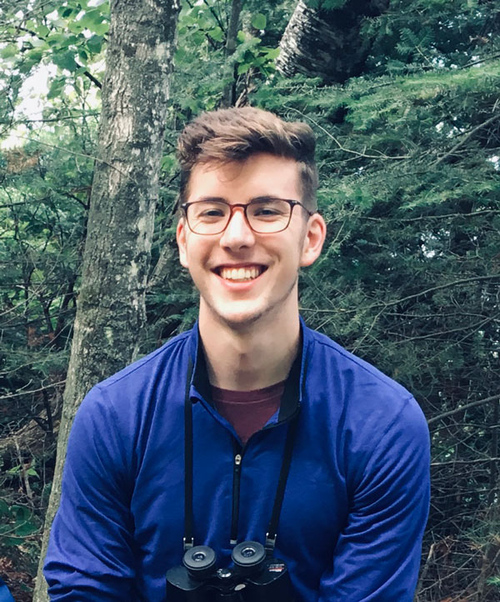An abandoned industrial building is an unlikely classroom for college students, but it was a perfect environment for Associate Professor Abram Kaplan’s environmental studies class. The building, a large industrial property in nearby Heath, has been for sale for a few years. The 79-acre site requires careful ecological attention for its future use, making it an ideal subject for Kaplan’s junior practicum students.
Their task: to explore potential uses for the site that meet the financial, community, and sustainability goals of the stakeholders involved, including company owners, government officials, and economic experts.
“The idea of the junior-level practicum experience is to apply the expertise, skills, and knowledge students develop in the environmental studies major toward a practical project that links theory with real-world practice,” says Kaplan. “We work as a consulting team for Meritor, Inc., a real client with real deadlines. The idea is to be as real-world as possible, and to support the needs of our local community.”
As they developed a SWOT (Strengths, Weaknesses, Opportunities, and Threats) analysis of the site, the class visited the former industrial plant — a critical first step according to environmental studies major Thomas Hellman ’21. “The most valuable thing about visiting the site was seeing how big it was — both the size of the plant and the total land area. This helped with visualizing what our site proposals could look like and how to make them more realistic for the site.”
In addition, they discovered that the site was directly across the street from a small park, home to an ancient Native American mound. This co-location became a crucial factor in their proposals. Through the Ohio History Connection, The Newark Earthworks have applied for a World Heritage site designation, which will significantly increase tourist activity in the area. Student research also focused on many environmental concerns, including a landfill and oil plume, which limited potential uses.
The students worked in teams to assess, evaluate, and research possibilities, which were limited in some cases. “Most work in the real world is team-based,” says Kaplan. “So this is a prime opportunity to figure out collaborative models that can work well.”
“I really enjoyed the group I was in,” says Hellman, who worked on a solar energy proposal. “The greatest strength of my team was the importance we placed on the work we did for our proposal. Yet, because we each focused on different aspects of the site to do our research on, getting help from other team members or talking through certain ideas about the proposal was a little challenging.”
After determining their proposals, everyone researched and prepared information on remediation options, legal constraints, regulatory frameworks, and funding/grant opportunities for their ideas. They gathered as a class to decide on the three best options to present to their clients.
They got to work developing an impressive written proposal and, toward the end of the semester, the entire class met with their clients to present their work.
You can see all of the research here.
It felt really good to have a class that didn’t just affect our GPA, but the surrounding community as well.
Interestingly, each proposal included some form of solar energy production. Solar energy production bypasses an effect of brownfield acreage (about 20 acres of the site), which can’t be developed in a usual sense because of underground pollution. Students discovered the solar market has grown 50% annually, and costs have dropped considerably, making solar production more affordable. Solar activity also addressed sustainability concerns. And they found it can be an economic driver, creating upwards of 375 jobs, and initiating a training program at the local technical school.
The presentation to local stakeholders opened some eyes. In fact, both Heath Mayor Mark Johns and economic developer Nate Strum noted they hadn’t considered the idea of solar on the brownfield area of the site — and they were incredibly excited about that idea.
“You’ve done really good work,” Johns said. “I appreciated your thoughts about the site, and that you kept financial considerations in mind as you developed these plans.”
Strum approved as well, noting that Honda has indicated that by 2028 their three major car models will only be available as electric. “This is doable, practical, and where the market is going.”
Hellman says, “The best part is that we actually made good changes in the community. It felt really good to have a class that didn’t just affect our GPA, but the surrounding community as well. This is why I would definitely recommend this class to other students.”
The proposals:
- A destination site for the nearby Earthworks Native American mounds, with mixed-use development, including a visitors’ center and a large parking lot, for the anticipated World Heritage site. Both the center and parking lot would include solar array canopies, in addition to 10 acres of solar panels, which would create energy that can be sold back to the community.
- An industrial site proposal for solar manufacturing, including a reforested area. A proposed solar array would provide energy for the company, with the remainder sold back to the community. The manufacturing facility would create an estimated 375 new jobs.
- A solar array for the purposes of creating energy to be sold back into the grid, with an additional educational component on solar energy possibilities.




